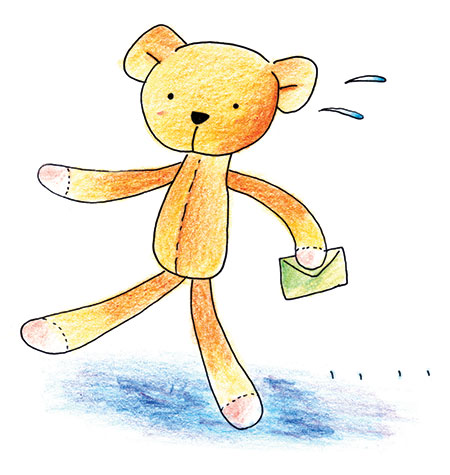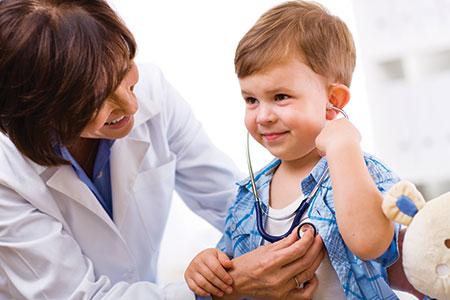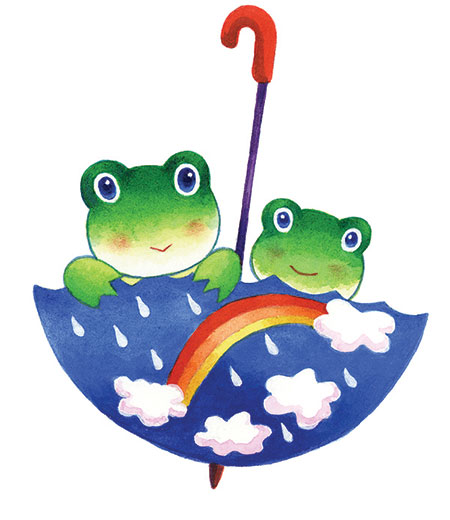ANAESTHESIA AND ANAESTHETISTS
What is anaesthesia?
The word anaesthesia means loss of sensation.
A general anaesthetic ensures that your child is unconscious and free of pain during a test (investigation) or operation.
- General anaesthesia is a state of controlled unconsciousness and freedom from pain.
- Anaesthetics are the drugs (gases and injections) that are used to start and maintain anaesthesia.
The anaesthetists
Anaesthetists are specialist doctors who give the anaesthetic and look after the health of your child during surgery. They are also closely involved with your child’s pain relief after surgery.
Choice
It may be possible for you and your child to choose how the anaesthetic and other medicines are given. Sometimes there are medical reasons why things have to be done in a certain way – these will be explained to you.
Nothing will happen unless you understand and agree with what has been planned.
Your wishes and those of your child are very important.
We want to work with you to provide the best possible care for your child and family.
PREPARATION
There are many things that you can do to prepare your child for coming into hospital.
All children (except infants too young to understand) should be told:
- That they are going into hospital;
- That they will be having an operation or investigation;
- Some basic information about what will happen to them when they are in hospital.
Everything should be explained to your child in a way that he/she can understand. FV Hospital has staff who can give explanations and encourage discussion through play.
Timing
Children between 2 and 3 years of age should be told 2 – 3 days before and again on the day of admission.
Children between 4 and 7 years of age should be told 4 – 7 days before the day of admission.
Older children will usually be involved in making decisions about the operation or investigation and discussion can take place a few weeks before the day of admission.
If you and your child would like to visit the ward and operating theatres before the day of admission, please just ask us.
Some ideas of what to say…
- Explain that the operation or investigation will help your child to get better.
- Use simple words your child understands.
- Encourage your child to talk about the operation and ask questions. Books, games and stories can help.
- Tell your child about timing – when he or she will have the operation or investigation and how long their stay in hospital will be.
If your child will be staying in hospital overnight, let him or her know if you will be able to stay too. FV Hospital provides accommodation for parents (in a folding bed) next to your child’s bed.
If it is not possible for you to stay with your child, it is important that you explain to him or her when you will be able to visit.
Your child can help pack his or her own bag and decide which nightclothes and toys to bring.
Please let us know in advance any special requirements your child has and we will do whatever we can to help

ON THE DAY OF ADMISSION
A pre-operative visit
You will either meet with your anaesthetist before admission or an anaesthetist will visit you on the ward before the procedure to discuss your child’s anaesthetic.
The anaesthetist needs to find out about your child’s general health, previous experiences of anaesthesia, any medicines your child is taking and any allergies he or she might have.
This is a good time to talk about any previous experiences your child has had with injections or hospitals, or any particular concerns you have about this.
You may find it helpful to make a list of questions you want to ask.
Questions you may like to ask the anaesthetist
- Who will give my child’s anaesthetic?
- What type of anaesthetic do you recommend?
- Have you often used this type of anaesthetic?
- What are the risks of this type of anaesthetic?
- Does my child have any special risks?
- How will my child feel afterwards?
For practical reasons, the anaesthetist who you meet pre-admission or who comes to see you on the ward may not always be the same one who gives your child’s anaesthetic, but the information you give them will be passed on.
Delaying the operation or investigation
Occasionally the anaesthetist may learn something about your child that means it would be safer not to do the procedure on that day.
This could happen if your child has a bad cold, fever, has a rash or has eaten food too recently.
Nothing to eat and drink – fasting (“Nil by mouth”)
The hospital will give you clear instructions about fasting. It is important for your child to follow these.
If there is food or liquid in your child’s stomach during the anaesthetic, it could come up into the back of the throat and damage his or her lungs.
Unless your surgeon or anaesthetist tells you otherwise, these are the latest times that you should give your child anything to eat or drink:
- 6 hours before your child can have a light meal, a glass of milk or a carbonated drink. Bottle fed babies can have formula feed.
- 4 hours before babies can have breast milk.
- 2 hours before your child can have a carbonated drink without residue, no milk, no fruit juice, no soup.
Premedication
Premedication (a ‘pre-med’) is the name for drugs which are given before some anaesthetics. Some pre-meds help your child to relax, and some are given for other reasons (see below).
Not every child needs a pre-med. Depending on the kind of surgery and your child’s condition, you will often be able to help decide, with the anaesthetist, whether your child needs a pre-med or not.
If your child does need a pre-med, this will usually be given as a liquid. Occasionally an injection is essential. Pre-meds are given some time before the anaesthetic.
They may make your child drowsier after the operation or investigation, and if you plan to take him or her home on the same day, this may be delayed.
The drugs used can be:
- Sedatives to ease your child’s anxiety
- Medicines to protect your child from side effects of the anaesthetic (for example, nausea)
- An extra dose of treatment for illnesses like asthma.
Going to “theatre”
Your child may be able to wear his or her own clothes to the operating theatre, but if not most hospitals provide gowns to wear.
Your child will be asked to remove the underwear.
Your child may travel to the anaesthetic room in a bed, on a trolley, walking or being carried.
Anaesthetic room – the room next to the operating theatre where anaesthetics are usually started.
Operating theatre – the room where surgery is performed. If your child is very small, or is having certain kinds of surgery, it may be safer to give the anaesthetic in the operating theatre rather than in the anaesthetic room.
Recovery room – a place near the operating theatre where children go after surgery until the effects of the anaesthetic drugs wear off.
In the anaesthetic room
A nurse from the ward will accompany you and your child to the anaesthetic room. Your child may be able to take a toy or comforter.
It may be possible to give the anaesthetic while your child is sitting on your lap. Your child may have either an anaesthetic gas to breathe or an injection through a cannula (see next page).
You do not have to accompany your child to the anaesthetic room. If you prefer, you can ask a nurse from the ward to go with them.
Some children prefer gas and some prefer injections.
If both methods are safe for your child, you may be able to choose which is used.

Anaesthetic gases smell similar to felt-tip pens.
The anaesthetist generally cups a hand over the child’s nose and mouth or uses a face-mask to give the anaesthetic gas.
If the anaesthetic is given by gas, it will take a little while for your child to be anaesthetised. He or she may become restless as the gases take effect.
If an injection is used, your child will normally become unconscious very quickly indeed. Some parents may find this unsettling.
“Magic Cream” is local anaesthetic cream that can be put on the hand or arm before injections so that they do not hurt so much. It works well for 9 out of 10 children. This cream is also called EMLA.
A “cannula” is a thin plastic tube that is placed under the skin, usually on the back of the hand. A needle is used to put the cannula in, but the needle is immediately removed leaving only the soft cannula in place. Blood samples will be taken from the freshly inserted cannula. A cannula can be left in place for hours or days so that drugs and fluids can be given without the need for further injections.
What happens next?
Your child will be taken into the operating theatre to have the operation or investigation.
The anaesthetist will monitor your child’s blood pressure, pulse, temperature and breathing closely throughout the procedure, ensuring that he or she is safe and fully unconscious. Anaesthetic gases and/or drugs given into a vein will be used to keep your child anaesthetised.
After surgery
Most children go to a recovery room.
Each child is cared for by a recovery staff until he or she has regained consciousness and is comfortable enough to return to the ward.
Some children may need to go to the Intensive Care Unit after their operation. If this is planned, it will be discussed with you beforehand.
PAIN RELIEF
Pain relieving drugs are given during the anaesthetic to ensure that your child is as comfortable as possible after surgery. The type and strength of pain relief given will depend on the procedure.
You will have a chance to discuss and help plan the kind of pain relief (analgesia) your child will get after their operation. This will be with the anaesthetist, the surgeon or the ward nurses.
Ways of giving pain relief
- Syrups and tablets – just like at home.
- Melts – medicines that ‘melt in your mouth’ – these are especially suitable for older children.
- Suppositories – some pain relieving medicines like paracetamol can be given rectally (into the bottom). These are often given while your child is anaesthetised and last for several hours. Suppositories are very helpful when children cannot take medicines by mouth or are feeling sick.
- Local anaesthetics – these are injected near the nerves around the operation site to numb the area. The injections are given while your child is anaesthetised and the pain relief lasts for several hours.
- Strong pain relieving drugs – such as morphine can be given in many different ways.
Some common terms used with medicines
- IV – intravenous – when drugs are given into a vein through a cannula.
- IM – intramuscular – when drugs are given by injection into the muscles of the bottom or upper arm.
- S/C – subcutaneous – when drugs are given under the skin, either as a ‘one off’ or through a cannula.
- Infusion – when drugs are given continuously, usually by a special pump.
- PCA – Patient Controlled Analgesia – an infusion of pain relieving drugs controlled by a pump with a button which your child can push when extra doses are needed.
- Epidural – local anaesthetic is injected through a thin tube placed close to the spine – used after major surgery.
- Caudal – an injection of local anaesthetic near the nerves as they leave the spine, similar to an epidural.
GOING HOME
Many children have their investigations or operations carried out as ‘day stay’ patients and go home on the same day. They may experience some pain or discomfort on the first day or so. The hospital will check that you have suitable pain relieving medicines at home. If not, you will be given medicines to take home with you and explanation on how to take them.
Occasionally children feel sick after they have left hospital, or even vomit. This sometimes happens in the car on the way home.
Sometimes children do not sleep well after a stay in hospital. Their behaviour might be a little bit more clingy or difficult than before. This is a normal reaction to a stay in hospital, and will usually return to normal within 3–4 weeks.
If you have any concerns about your child when you get home you should contact the hospital using the telephone number provided.

SIDE EFFECTS AND COMPLICATIONS
In modern anaesthesia, serious problems are uncommon. Risk cannot be removed completely, but modern equipment, training and drugs have made it a much safer procedure in recent years.
Most children recover quickly and are soon back to normal after their operation and anaesthetic. Some children may suffer side effects like sickness or a sore throat. These usually last only a short time and there are medicines available to treat them if necessary.
The exact likelihood of complications depends on your child’s medical condition and on the nature of the surgery and anaesthesia your child needs. The anaesthetist can discuss this with you in detail at the pre-operative visit.
For a child in good health having minor surgery:
- 1 child in 10 (like one person in a large family) might experience a headache, sore throat, sickness or dizziness;
- 1 child in 100 (like one person in a street) might be mildly allergic to one of the drugs that has been given;
- 1 child in 20,000 (like one person in a small town) might develop a serious reaction (allergy) to the anaesthetic.



